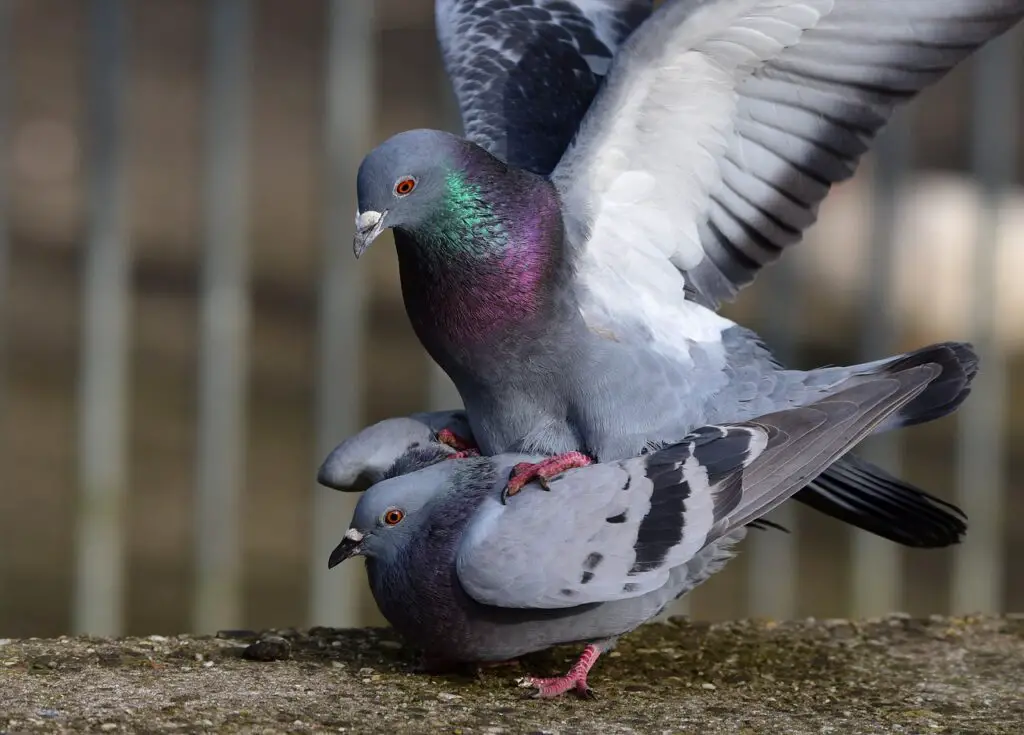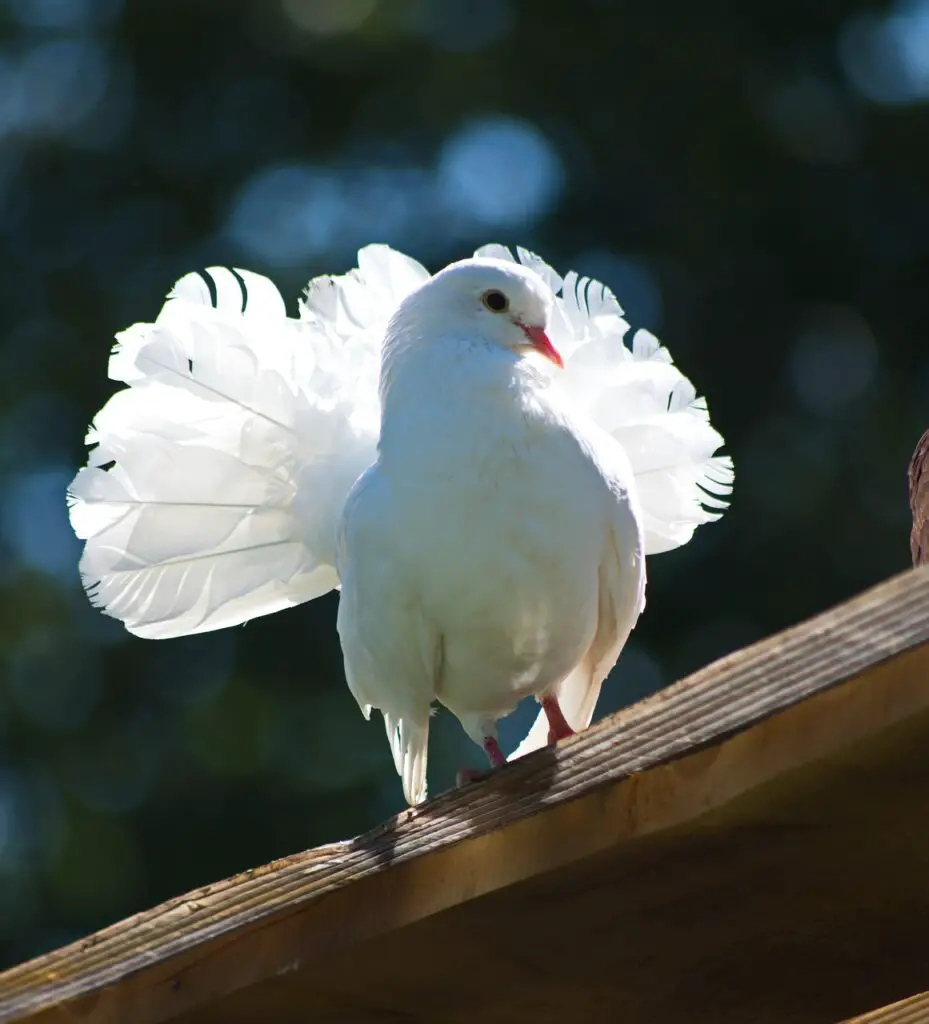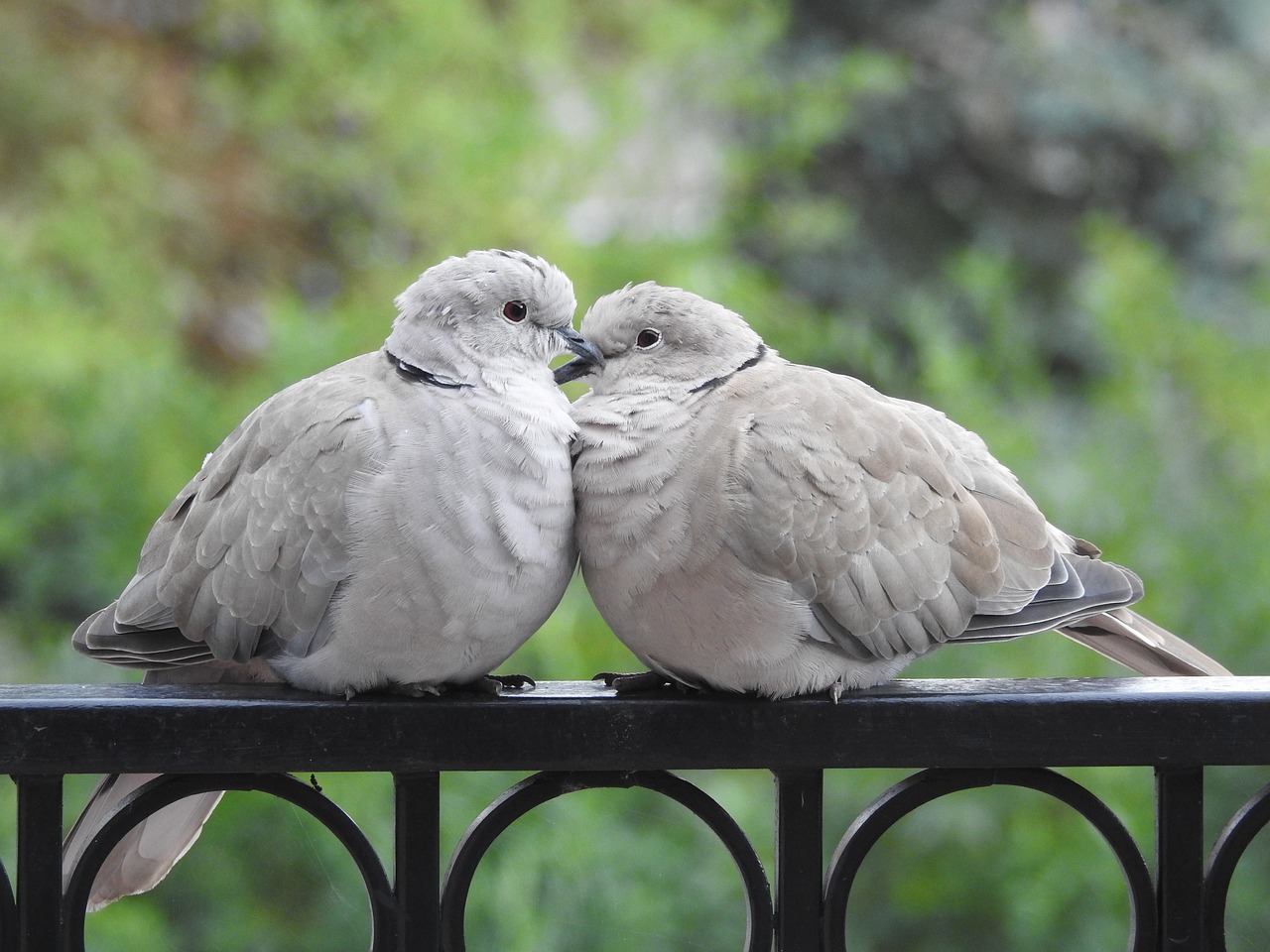Breeding pigeons is a fascinating endeavor that allows you to witness the entire lifecycle of these remarkable birds. Whether you’re interested in pigeon racing, maintaining a pigeon flock, or simply nurturing a love for these birds, breeding pigeons can be a rewarding and educational experience.
In this comprehensive guide, we’ll walk you through the process of breeding pigeons step by step, from selecting breeding pairs to caring for the young squabs.
You may also want to read about the best pigeon food.
Step 1: Understanding Pigeon Breeds
Before you begin breeding pigeons, it’s important to familiarize yourself with different pigeon breeds. Pigeon breeds vary in size, color, and purpose. Some popular pigeon breeds include:

- Homers (Racing Pigeons): Bred for speed and endurance, racing pigeons are commonly used in pigeon racing competitions.
- Fantails: Known for their unique fan-shaped tails, Fantails are bred for their striking appearance.
- Utility Breeds: Breeds like Kings, Carneaux, and Racing Homers can also serve as utility pigeons, producing meat and squabs.
- Exhibition Breeds: Breeds like English Trumpeters and Show Rollers are raised for their aesthetic qualities and are commonly displayed in pigeon shows.
- Utility Breeds: Breeds like Kings, Carneaux, and Racing Homers can also serve as utility pigeons, producing meat and squabs.
Choose a breed that aligns with your goals and preferences for breeding.
Step 2: Creating Suitable Housing
Providing the right housing is essential for successful pigeon breeding. Pigeon housing, often referred to as lofts, should meet the following criteria:
- Spacious: Lofts should provide ample space for pigeons to move around comfortably, with separate sections for breeding pairs and squabs.
- Well-Ventilated: Proper ventilation is crucial to prevent respiratory issues. Ensure that fresh air circulates through the loft without causing drafts.
- Nesting Boxes: Install nesting boxes for breeding pairs. These boxes should be elevated to provide a sense of security and should be designed to prevent squabs from falling out.
- Clean and Dry: Keep the loft clean and dry to prevent diseases. Regularly replace bedding material, such as straw or wood shavings.
- Secure: Protect the loft from predators by installing screens or wire mesh on windows and doors.
- Access to Light: Pigeons require access to natural light. Install windows or provide artificial lighting to mimic natural daylight hours.
Step 3: Selecting Breeding Pairs
Choosing the right breeding pairs is crucial for successful pigeon breeding. Consider the following factors when selecting pairs:
- Age: Pigeons are sexually mature by the age of six months. It’s best to select pairs that are at least one year old for breeding.
- Compatibility: Observe pigeons’ behavior to ensure compatibility. Pairs that are aggressive or constantly fight may not be suitable for breeding.
- Health: Select healthy pigeons with no signs of illness or deformities. Regular health checks by a veterinarian are recommended.
- Genetics: Consider the genetics of potential pairs. Breeding pigeons with desirable traits can produce offspring with those characteristics.
- Pedigree: If you’re breeding for pigeon racing or show purposes, consider the pedigree of the pigeons to ensure strong bloodlines.
Step 4: Breeding Season
Pigeons have a breeding season, which typically occurs in the spring and summer months. However, with controlled conditions in a loft, you can encourage breeding at other times of the year.
- Preparation: In the weeks leading up to the breeding season, provide breeding pairs with a high-quality diet rich in grains and seeds to ensure they are in optimal breeding condition.
- Nesting Material: Pigeons use nesting material, such as straw or twigs, to build their nests. Provide an ample supply in the loft.

Step 5: Courtship and Nesting
Once you’ve selected breeding pairs and prepared for the breeding season, you’ll observe courtship behaviors and nest building:
- Courtship: Pigeons engage in courtship rituals, which may include bowing, cooing, and mutual preening. Males often puff up their feathers to attract females.
- Nest Building: Pigeons construct their nests in nesting boxes. Provide them with suitable nesting materials like straw, sticks, and twigs. Pairs will work together to build a nest.
- Egg Laying: After courtship and nest building, the female typically lays one or two eggs. Incubation begins once the second egg is laid.
Step 6: Incubation and Hatching
Pigeon eggs require incubation for approximately 17 to 19 days. During this time, the male and female take turns incubating the eggs:
- Incubation: Both parents share the responsibility of incubating the eggs. They sit on the eggs to keep them warm.
- Hatching: After the incubation period, the eggs hatch, and squabs (baby pigeons) emerge.
Step 7: Caring for Squabs
Caring for squabs is a crucial part of pigeon breeding. Follow these guidelines to ensure the health and well-being of the young pigeons:
- Feeding: Squabs initially rely on their parents’ crop milk, a specialized secretion produced by the parents. As they grow, they transition to solid food. Pigeon feed and crushed grains are suitable options.
- Heat: Young squabs require a warm environment. Provide a heating source in the loft to maintain an appropriate temperature.
- Protection: Pigeon parents are protective of their squabs. Avoid excessive handling, as it can stress the parents.
- Weaning: Squabs become more independent as they grow. They begin pecking at solid food and gradually transition away from crop milk.
Step 8: Record Keeping
Maintaining records is essential for tracking the progress of your breeding pairs and squabs. Keep a record of the following:
- Breeding dates: Record when each pair begins courtship and lays eggs.
- Hatching dates: Note when each egg hatches.
- Health observations: Keep track of any health issues or concerns.
- Pedigree information: If you’re breeding for specific traits, maintain pedigree records.
Step 9: Health and Care
Pigeons can be vulnerable to diseases and parasites. Regular health checks and preventive measures are essential:
- Vaccinations: Consult with a veterinarian about appropriate vaccinations for your pigeons.
- Parasite Control: Implement a parasite control program to prevent mites and other external parasites.
- Hygiene: Maintain a clean and dry loft to prevent diseases.
Step 10: Weaning and Separation
As squabs grow and become independent, you may need to separate them from their parents:
- Weaning: Once squabs are fully weaned and eating solid food independently, they can be separated from their parents.
- Separation: Provide separate cages or sections in the loft for young pigeons to grow and mature.
Step 11: Pigeon Racing (Optional)
If you’re breeding pigeons for racing purposes, the young pigeons will need specific training and conditioning:
- Training: Gradually introduce young pigeons to short training flights to build their strength and navigation skills.
- Conditioning: Create a rigorous training regimen to prepare young pigeons for racing.
- Racing: Participate in pigeon racing events and competitions, where your trained pigeons will compete against others.
Step 12: Continuing the Cycle
Breeding pigeons is a continuous process. After successfully raising one generation, you can repeat the process with new pairs or continue to breed from your existing pigeons.
Conclusion
Breeding pigeons is a rewarding and educational journey that allows you to observe the fascinating lifecycle of these birds up close. From selecting breeding pairs to caring for squabs and maintaining records, each step plays a vital role in the success of your breeding program. Whether you’re breeding pigeons for racing, exhibition, or simply as a hobby, the bond you develop with these intelligent and resilient birds is sure to be a source of joy and fulfillment. Remember that proper care, attention to health, and dedication are the keys to successful pigeon breeding.


